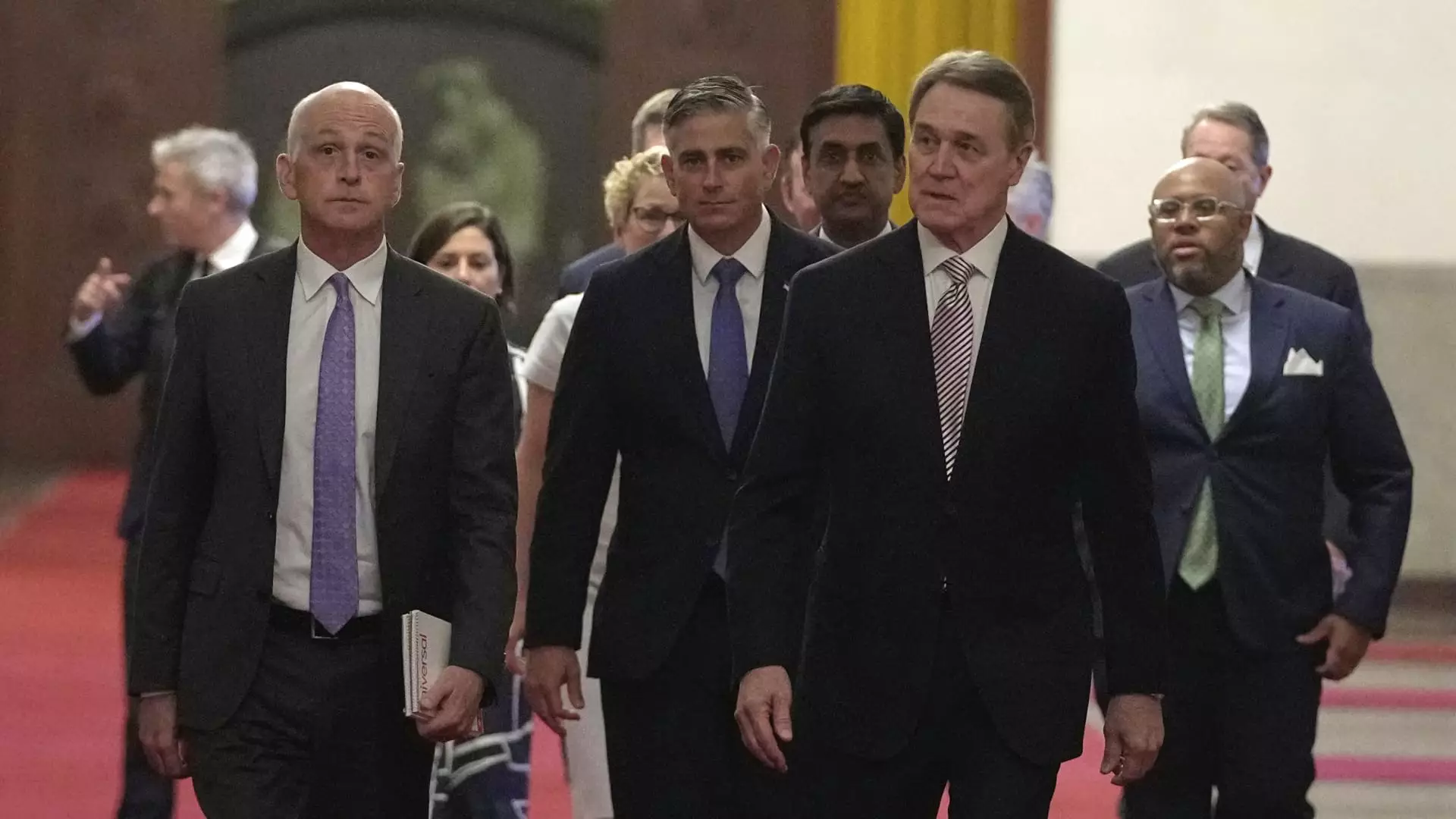The recent visit of a bipartisan U.S. congressional delegation to Beijing signals a moment of rare diplomatic courage, yet it also exposes the deep-rooted anxieties and strategic anxieties that define the current state of U.S.-China relations. For too long, the escalating tensions, fueled by trade disputes, geopolitical rivalries, and ideological differences, have created a chasm that seems increasingly insurmountable. This trip is neither just an act of diplomatic politeness nor a superficial gesture; it is a bold recognition that in the face of global upheaval, dialogue is an unavoidable necessity. Shifting away from hostility and towards engagement doesn’t mean naivety—rather, it reflects a strategic understanding that stability and peace are only achievable if these two powerhouses acknowledge their mutual interdependence.
The Illusion of Isolation and the Power of Engagement
The pandemic-induced pause in formal exchanges was a missed opportunity—one that allowed misunderstandings to fester and confrontations to deepen. Prior to COVID-19, sporadic but ongoing dialogues kept some semblance of stability alive. Its abrupt cessation magnified the risks of miscalculations and miscommunications amid a shifting global landscape. Now, as both economies face unprecedented challenges—ranging from technological decoupling to military posturing—there is an urgent need to reaffirm that engagement is not a sign of weakness, but a demonstration of pragmatic leadership. Diplomatic engagement, especially on complex issues like Taiwan’s sovereignty and activities in the South China Sea, must ground itself in a recognition that dialogue, even amidst disagreements, is preferable to the destructive alternative of escalation.
A Center-Left Perspective: The Middle Ground of Realism and Hope
From a center-liberal standpoint, it’s crucial to strike a pragmatic balance. While critics might argue that engagement risks coddling authoritarian tendencies or compromising democratic values, ignoring the importance of diplomacy is a reckless miscalculation. China’s rise is undeniable, but the United States cannot afford to dismiss or alienate Beijing completely. Instead, pragmatic engagement fosters conditions for mutual understanding, which is essential if we are to navigate the complex web of challenges—from climate change to global health crises—that require collective action. Rhetoric that demonizes China or seeks an impossible confrontation only feeds further hostility. Conversely, pursuing strategic competition, while maintaining open channels, offers the best chance at steering away from destructive conflicts and towards a future where cooperation is occuring alongside competition.
Recognizing the Stakes: Opportunities and Pitfalls
This trip isn’t devoid of risks. The U.S. has long made a point of challenging China on issues like technological sovereignty, human rights, and military expansion. Some may view gestures towards diplomacy as enabling Beijing’s unruly ambitions, especially in sensitive areas such as Taiwan. Yet, a purely confrontational stance risks entrenching a cycle of hostility that benefits no one. Instead, a nuanced approach—acknowledging differences while seeking common ground—has the potential to open pathways for future negotiations. The decision to break the ice and foster dialogue signals a recognition that, despite disagreements, both nations are too intertwined in their economic, technological, and diplomatic interests to remain locked in perpetual confrontation.
Moving Forward: The Imperative for Authentic Engagement
What makes this upcoming period so critical is the understanding that superficial gestures or short-term tactics are insufficient. Genuine, sustained engagement must focus on building trust, clarifying intentions, and establishing mutual safeguards. In a world increasingly threatened by instability, the idea that confrontation would serve the best interests of global peace is fundamentally flawed. The challenge lies in ensuring that these diplomatic exchanges lead to tangible policy shifts—resolving trade tensions, safeguarding global supply chains, and establishing norms that prevent military miscalculations. Only through persistent dialogue—grounded in realism but driven by hope—can the fear of conflict diminish and a more stable, cooperative future emerge.
The moment demands not only courage but a firm belief that diplomacy, even with its imperfections, remains the most effective tool for shaping a safer world. The United States and China face a choice: retreat behind nationalistic walls and risk mutual destruction or engage earnestly and constructively to forge a path towards coexistence. The former leads to further destabilization; the latter, although fraught with difficulties, offers the most promising avenue for global stability and prosperity.


Leave a Reply